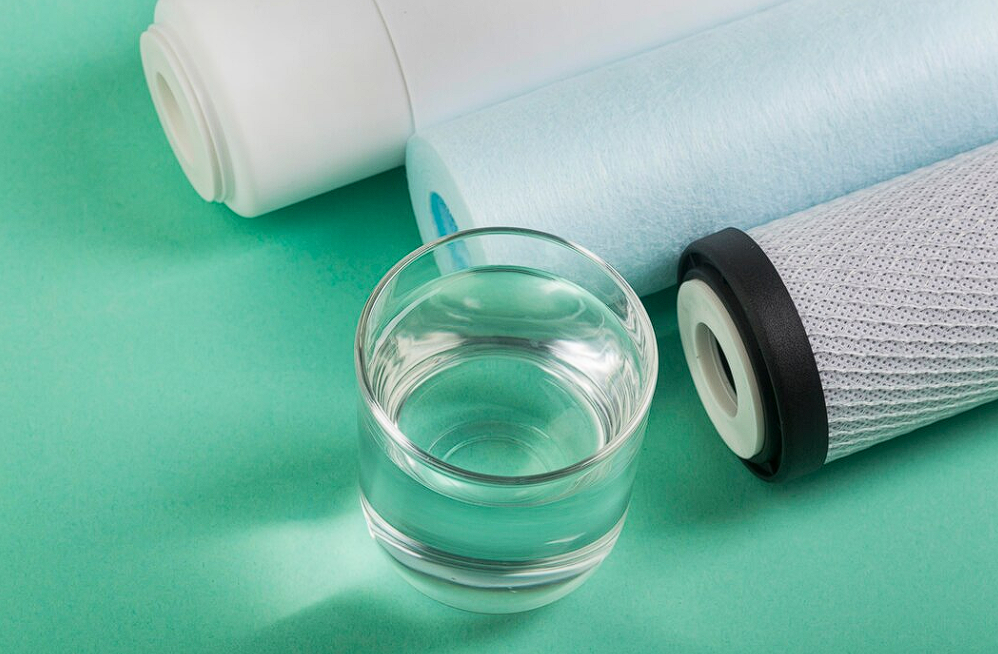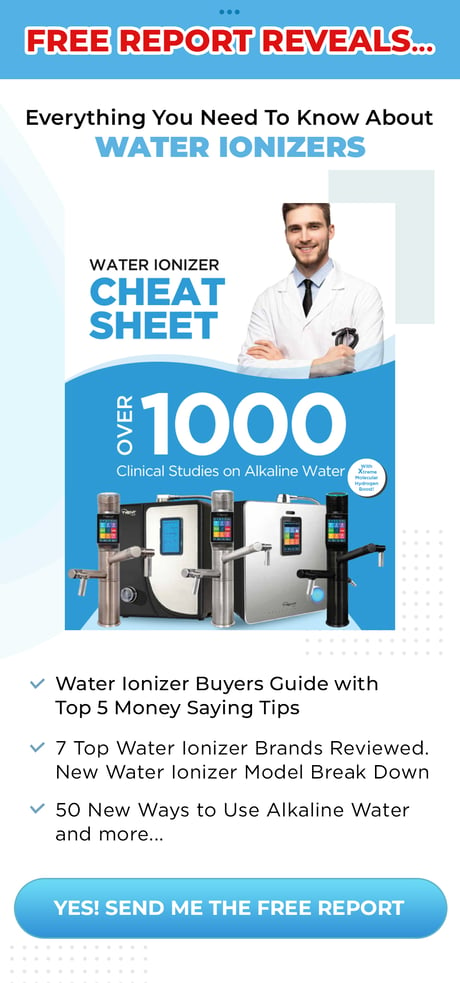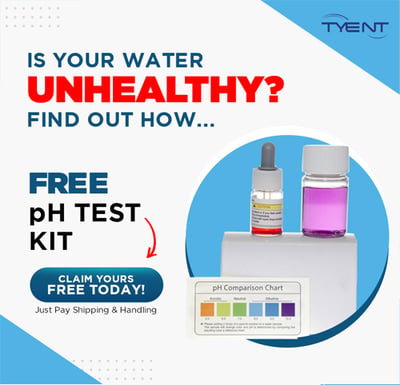Curious about reverse osmosis bottled water? Find out its pros and cons below.
RELATED: Reverse Osmosis Process: How Does It Work?
A Look at the Benefits and Downside of RO Bottled Water
Bottled Water as a Source of Contaminant-Free Water
Because of the ever-increasing levels of pollution, quite a number of our natural water sources are getting contaminated with dangerous chemicals at an alarming speed. This raises the question of the safety of drinking water that isn’t treated thoroughly to remove such contaminants.
Realizing this, an increasing number of concerned people have been working on improving the quality of purified drinking water available to us. Bottled water as a source of clean, uncontaminated water seems to be gaining popularity nowadays.
In fact, according to the International Bottled Water Association (IBWA), the U.S. bottled water consumption in 2015 is a whopping 11.7 billion gallons. This is a testament of how more and more people are drinking bottled water now more than ever.
We can attribute this increasing demand to the fact that bottled water is indeed one of the “cleanest” sources of drinking water. Thanks to the technique called Reverse Osmosis or RO that many bottled water brands employ to purify water.
This technique might be familiar to you as it’s heavily advertised as the best method to clean water. If you ever want to dig deeper on what exactly this technique is and how it’s done, you are in the right place.
Reverse Osmosis Explained
![reverse osmosis filtration | Best Bottled Water That’s Safe To Drink [Reverse Osmosis Water] | best bottled water](https://www.tyentusa.com/blog/wp-content/uploads/2019/04/reverse-osmosis-filtration-makes-purify-drinking-bottled-water-ss.jpg)
Basically, reverse osmosis is a filtration process with a more efficient principle compared to the regular filtration process—filtration happens at a molecular level. Thus, it can get rid of almost all the dissolved contaminants present in tap water.
The RO process uses a component called “semipermeable membrane.” This is a filtration mesh that can selectively allow the passage and capture of different molecules in tap water based on their sizes.
Despite being invisible to the naked eye, dissolved chemicals have different molecular sizes than water. Most of these dissolved contaminants are larger than water molecules.
When contaminated tap water passes through the semipermeable membrane in the RO process, contaminants whose molecules are larger than H2O are filtered successfully.
Most purification processes (like that of distilled water) do not employ molecular filtration. While they may remove most of the undissolved contaminants, they can’t do much to get rid of the dissolved impurities.
In contrast, reverse osmosis can filter as much as 99% of all dissolved contaminants in tap water. The RO process produces a pure quality of water making it the preferred filtration process of many companies in the bottled water industry.
Benefits of Reverse Osmosis
- The biggest advantage of RO water is the rate of purity.
- Reverse osmosis can filter out lead, pesticides, heavy metals, and other organic components.
Downsides of Reverse Osmosis Water
While reverse osmosis water might be pure, there’s more to it than meets the eye:
- Reverse osmosis water is devoid of essential minerals.
- Reverse osmosis water can leach minerals from your bones over time.
Since this process filters 99% of all dissolved chemicals from water, it also removes beneficial minerals.
We get a percentage of our calcium and magnesium requirement from drinking water. In its purity, reverse osmosis water is devoid of minerals including these two.
This might not look like a big deal but prolonged consumption of reverse osmosis water can affect one’s health negatively.
A 2002 World Health Organization study in the Czech Republic found that people who exclusively drank reverse osmosis water developed lower levels of calcium and magnesium. This translates to higher risks of heart and other complications.
RELATED: Does Reverse Osmosis Remove Healthy Minerals From Drinking Water?
- RO water flushes out other stored minerals in the body.
Additionally, since water contains no dissolved solids, it leaches away stored minerals too as it runs through the body. These minerals are eventually excreted through urination.
The lack of calcium and magnesium intake and the increased erosion of the stored reserves in the body lead to a deficiency.
- Filtered RO water leaves out waste material.
The process of reverse osmosis itself is not exactly self-sustaining. The membrane used to filter out chemicals and bacteria, for the most part, gets clogged with salt, chlorine, and unsafe microorganism residues.
So even if you end up having clean drinking water, you leave the environment — especially marine life — with toxic waste when you rely on reverse osmosis to filter your home water.
- RO water takes longer to produce.
Other home filtration systems perform their purpose faster than reverse osmosis set-ups.
RO systems usually take 3 to 4 hours to produce 3 liters of clean drinking water. This means that it may take a day to produce enough water for the whole family.
- Reverse osmosis water is actually acidic.
As minerals that make it alkaline are removed in RO water, its pH drops. Drinking it, then, poses risks to the body.
If the extracellular fluid (where our cells are exposed to) becomes too acidic, the body’s defense mechanism weakens. The consequences manifest as biological symptoms like stomach pain and headache.
Drink reverse osmosis at your own risk. The said downside might be prevented by increasing mineral intake through diet or consumption of supplements.
Or, better yet, install a water ionizer for your home or buy a portable water alkalizer for when you’re out and about.
We’ve laid out the considerations—it’s pure but this same benefit is also the cause of its disadvantage.
Drinking reverse osmosis bottled water with its purity is generally safe but there is a caveat. It calls for the uptake of minerals from other food sources or supplements to prevent the development of deficiencies.
Do you have any other questions about drinking reverse osmosis bottled water? Let’s hear them in the comments section below!
Up Next:

![Feature | reverse osmosis system water drinking plant | Best Bottled Water That’s Safe To Drink [Reverse Osmosis Water] | bottled water brands](https://www.tyentusa.com/blog/wp-content/uploads/2019/04/reverse-osmosis-system-water-drinking-plant-bottled-water-ss-Feature.jpg)
![What is the Best Water to Drink? Everything You Need to Know [2024] Screenshot 2024-10-22 111520](https://www.tyentusa.com/blog/wp-content/uploads/2024/10/Screenshot-2024-10-22-111520-150x150.png)

![The Dangers of Reverse Osmosis Water [2024] hydrogen water](https://www.tyentusa.com/blog/wp-content/uploads/2020/08/Screenshot-2024-09-08-083127-150x150.png)





Wow! Thanks for sharing such a nice piece of information with all of us.
Hi, Jack. It’s our pleasure to help. If you’re interested in learning more about what bottled water brands to avoid and what kind of water you should drink instead, check out this article.
I live in Asia and my delivered water is ro I guess, how do I mineralize my water?
Hi, Dave. Thanks for your question. The best way to remineralize, purify, and ionize your water is to use a water ionizer. This will let your water regain the minerals that were lost in the RO process, as these nutrients are essential to good health and the proper functioning of our organs. While we get the majority of these minerals from food, water is also a big part of where your body gets them from.
Given this, we recommend that you keep your reverse osmosis machine to deep clean your water, and then hook it up to a Tyent water ionizer so that you get healthy antioxidants and minerals in your water, as well. Not only is owning a water ionizer more environmentally friendly, as you won’t need to buy and recycle hundreds of plastic bottles, but it’s better for your health in the long term, too.
We would love to talk to you more about the benefits of our water ionizers and the process of the hookup, so please give our water experts a call at 855-893-6887.
You did not mention when your local drinking water filtration is complete unless they get the local supply solely from an uncontaminated spring or fresh water supply that the process leaves in antibiotics, hormones and does have the capacity to filter pesticides. RO removes all of those contaminants making it the much safer alternative to drink RO water and take a supplement/multivitamin.
Hi, Cary. While it’s true that a Reverse Osmosis (RO) system gets rid of a lot of toxins, it doesn’t completely remove all chemicals. According to the CDC, it only reduces chemicals like arsenic, fluoride, and radium. An RO system also removes all of the minerals from your water, too, which means your body won’t get the minerals it needs.
Drinking demineralized water can be potentially problematic in the long term. This recent eco-epidemiological study of 13,723 girls and 16,161 boys noted that – among other issues – low-mineral water can retard height growth and increase the possibility of dental decay.
Alongside the health risks, demineralized water is also corrosive to metal pipes, containers, and storage tanks, giving rise to the risk of contamination.
The World Health Organization (WHO) took a comprehensive look at minerals in water and the potential risks of reverse osmosis. Ultimately, we align our view with the WHO statement: that long-term consumption, “has a definite adverse influence on the animal and human organism.”
We are very happy to answer any questions that you have about the relative merits of a water ionizer, so please gives us a call at 855-893-6887.